Do you have a question about the SoundCraft COMPACT 10 and is the answer not in the manual?
Explains hazard symbols and associated warnings for user safety.
Identifies the exclamation point symbol indicating important operating and maintenance instructions.
Highlights important information and useful tips for equipment operation.
Provides crucial information and tips regarding headphone outputs and monitoring levels.
Advises on using only the supplied AC adaptor and checking voltage ratings.
Details the scope of the manual, product compatibility, and service information.
Emphasizes reading safety sections to ensure personal safety and warranty validity.
Outlines environmental and handling considerations for optimal equipment performance.
Details balanced and unbalanced XLR connections for microphones, including phantom power.
Explains balanced and unbalanced jack connections for line-level sources.
Describes the unbalanced insert point for connecting external signal processors.
Covers stereo input connections for Compact4 and Compact10, including unbalanced options.
Explains balanced jack outputs for main mix and monitor signals, suitable for long cable runs.
Details headphone output specifications and recommended impedance for optimal performance.
Explains signal polarity importance in balanced audio and correct wiring for phase integrity.
Provides guidelines for optimal performance, minimizing noise and earth loops.
Information for USA and UK customers regarding warranty support contact details.
Guidance for contacting support for products outside the warranty period.
Explains the +48V phantom power for condenser mics and safety precautions.
Details XLR connections for balanced/unbalanced mic signals, impedance, and phantom power.
Describes jack connections for line-level sources, including unbalanced use.
Explains the function of the HPF to reduce low-frequency noise and rumble.
Activates high impedance mode for guitar signals, enhancing bass guitar tone.
Describes the unbalanced, pre-EQ insert point for signal processors.
Sets input signal level to achieve optimal signal-to-noise ratio and avoid distortion.
Details the HF, Mid, and LF EQ controls for tone manipulation.
Controls the stereo image positioning of the channel signal.
Adjusts the overall signal level within the channel strip for balancing.
Routes the pre-fade signal for channel setup and adjustment.
Sends channel audio to record outputs, enabling direct recording without latency.
Details unbalanced phono inputs for stereo sources like keyboards and CD players.
Reverses EQ curve for turntable inputs to restore original signal quality.
Provides controls for adjusting high, mid, and low frequencies of stereo inputs.
Controls the signal's position within the stereo image for left/right mix buses.
Describes monitor outputs and the level control for L/R outputs.
Explains the mono check switch and balanced mix outputs.
Details the mix level control and monitor mix switch for signal routing.
Covers bargraph meters, power indicator, and low battery indicator.
Covers artist headphone outputs and level control for personal monitoring.
Details engineer headphone outputs and level control for monitoring.
Allows routing artist mix to engineer headphones for communication.
Explains controls for record output and playback input levels.
Describes the monitor playback function for listening to recorded signals.
Details balanced and unbalanced playback input connections.
Explains balanced and unbalanced record output connections.
Discusses optimal microphone types and placement techniques for sound reinforcement.
Offers advice on setting up live environment speakers and studio monitors.
Illustrates mixer setup for recording audio via a computer.
Shows mixer configuration for live DJ and VJ performances.
Demonstrates mixer setup for live sound reinforcement scenarios.
Depicts mixer configuration for ENG applications with video cameras.
Shows mixer setup for broadcast studio environments.
Illustrates mixer setup for house of worship applications.
Explains hazard symbols and associated warnings for user safety.
Identifies the exclamation point symbol indicating important operating and maintenance instructions.
Highlights important information and useful tips for equipment operation.
Provides crucial information and tips regarding headphone outputs and monitoring levels.
Advises on using only the supplied AC adaptor and checking voltage ratings.
Details the scope of the manual, product compatibility, and service information.
Emphasizes reading safety sections to ensure personal safety and warranty validity.
Outlines environmental and handling considerations for optimal equipment performance.
Details balanced and unbalanced XLR connections for microphones, including phantom power.
Explains balanced and unbalanced jack connections for line-level sources.
Describes the unbalanced insert point for connecting external signal processors.
Covers stereo input connections for Compact4 and Compact10, including unbalanced options.
Explains balanced jack outputs for main mix and monitor signals, suitable for long cable runs.
Details headphone output specifications and recommended impedance for optimal performance.
Explains signal polarity importance in balanced audio and correct wiring for phase integrity.
Provides guidelines for optimal performance, minimizing noise and earth loops.
Information for USA and UK customers regarding warranty support contact details.
Guidance for contacting support for products outside the warranty period.
Explains the +48V phantom power for condenser mics and safety precautions.
Details XLR connections for balanced/unbalanced mic signals, impedance, and phantom power.
Describes jack connections for line-level sources, including unbalanced use.
Explains the function of the HPF to reduce low-frequency noise and rumble.
Activates high impedance mode for guitar signals, enhancing bass guitar tone.
Describes the unbalanced, pre-EQ insert point for signal processors.
Sets input signal level to achieve optimal signal-to-noise ratio and avoid distortion.
Details the HF, Mid, and LF EQ controls for tone manipulation.
Controls the stereo image positioning of the channel signal.
Adjusts the overall signal level within the channel strip for balancing.
Routes the pre-fade signal for channel setup and adjustment.
Sends channel audio to record outputs, enabling direct recording without latency.
Details unbalanced phono inputs for stereo sources like keyboards and CD players.
Reverses EQ curve for turntable inputs to restore original signal quality.
Provides controls for adjusting high, mid, and low frequencies of stereo inputs.
Controls the signal's position within the stereo image for left/right mix buses.
Describes monitor outputs and the level control for L/R outputs.
Explains the mono check switch and balanced mix outputs.
Details the mix level control and monitor mix switch for signal routing.
Covers bargraph meters, power indicator, and low battery indicator.
Covers artist headphone outputs and level control for personal monitoring.
Details engineer headphone outputs and level control for monitoring.
Allows routing artist mix to engineer headphones for communication.
Explains controls for record output and playback input levels.
Describes the monitor playback function for listening to recorded signals.
Details balanced and unbalanced playback input connections.
Explains balanced and unbalanced record output connections.
Discusses optimal microphone types and placement techniques for sound reinforcement.
Offers advice on setting up live environment speakers and studio monitors.
Illustrates mixer setup for recording audio via a computer.
Shows mixer configuration for live DJ and VJ performances.
Demonstrates mixer setup for live sound reinforcement scenarios.
Depicts mixer configuration for ENG applications with video cameras.
Shows mixer setup for broadcast studio environments.
Illustrates mixer setup for house of worship applications.
| Channels | 10 |
|---|---|
| Type | Analog |
| Mic Inputs | 4 |
| Line Inputs | 6 |
| Inputs - Line | 6 |
| Phantom Power | Yes |
| EQ | 3-band |
| EQ Bands | 3-band |
| Headphone Output | 1 |
| Inputs - Other | 2 x RCA (stereo) |
| Aux Sends | 1 |
| Main Outputs | Stereo |
| Outputs - Main | Stereo |
| Weight | 4.5 kg |
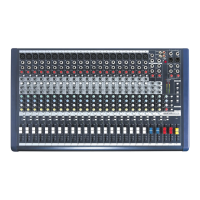
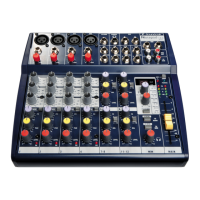



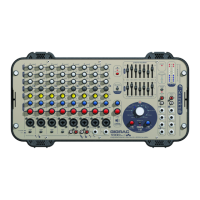
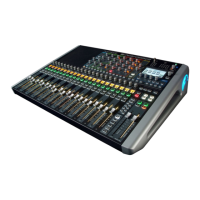
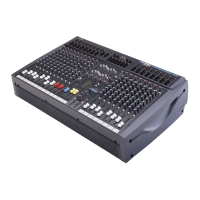
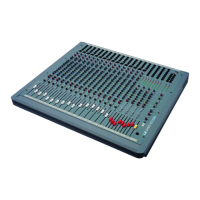
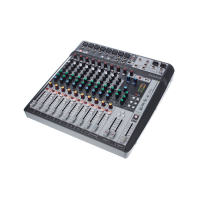
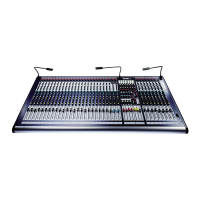
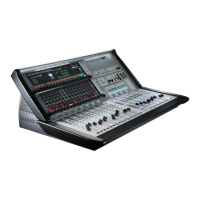
